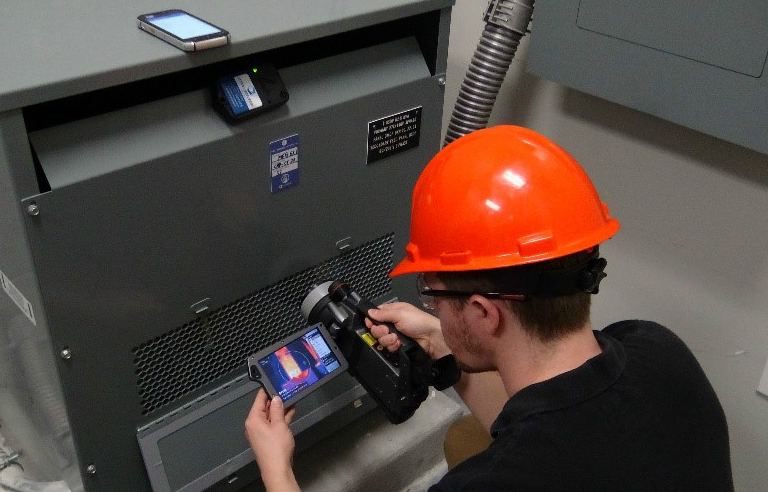Safety through technology: How to protect your workers, assets, and operations

Electrical incidents happen daily, putting lives and operational continuity at risk. However, there are ways companies can reduce the occurrence of these incidents and protect everyone concerned from the physical, financial, and statutory consequences. The National Fire Protection Association (NFPA) regulation 70E provides a reference for facilities to meet the requirements of electrical workplace safety, while regulation 70B outlines the best practices for setting up and maintaining and electrical preventive maintenance (EPM) program.
Value of standards
At the heart of NFPA 70E and OSHA initiatives is the Hierarchy of Controls. This concept attempts to mitigate risk wherever possible. In order of preference, the Hierarchy of Controls prioritizes:

NFPA 70E and OSHA state that electrical equipment should be de-energized prior to opening. Some maintenance tasks must be completed while equipment is loaded and energized, rapidly causing electrical maintenance safety devices (EMSDs) to become a hot topic. Their popularity is growing as companies strive to improve safety, profitability, and uptime. Those who are implementing EMSD-based programs are reaping significant benefits in terms of efficiency gains, cost control, and incident prevention.
Types of electrical maintenance safety devices
Just as equipment varies in design and purpose of use, so do these types of technologies. While some safety and maintenance programs might require a full-scope approach, others may require just a few of these technologies. These options are available from numerous manufacturers, and vary in size, material, certifications/ratings, etc. Having a better understanding of the design and purpose of these technologies gives companies a better understanding of how to best engineer a program focused on safety and reliability.
Infrared windows effectively reduce downtime and risk while offering access to the points inside equipment parts that require inspection and maintenance. Windows placed at targeted inspection points such as cable terminations or critical current-carrying components enable viewing in the visual, ultraviolet, shortwave, mid-wave, and longwave IR spectrums – providing full access to connections without the significant risks associated with panel removal. Organizations such as the IEEE have been at the vanguard of this movement with its “Safer by Design” campaign.
Ultrasonic ports are used to detect arcing and tracking problems in electrical distribution systems and switchgear. They provide a standard and systematic approach to collecting data essential to establishing repeatable CBM by providing a ventilated, standardized measurement point. Alternately, low-cost ultrasonic sensors can be permanently mounted to electrical equipment, allowing simple plug-in measurements with a handheld ultrasound detector. Maintenance personnel can therefore safely collect data on energized equipment without downtime.
Online monitoring systems attach directly to electrical enclosures. Asset surveillance is a crucial part of maintaining electrical equipment and helps identify issues early to avoid system damage and downtime by monitoring power quality and partial discharge with permanently installed equipment and software. The data is wirelessly transmitted for analysis and to establish trends, putting equipment temperature changes in historical context to ease problem identification.
Intelligent asset tags link maintenance instructions and equipment diagrams to simplify the inspection/maintenance process by providing technicians with the information they need when and where they need it. This invariably leads to safer working conditions and faster maintenance, as the technician does not have to search around for documentations, or worse, perform service ad hoc. Asset tracking and equipment maintenance history trend analysis help a business better understand how and why systems are operating or failing.
Value of electrical maintenance safety devices
The main benefits of using EMSDs is that they remove risk of incidents threatening the safety of workers and provide for a more efficient pathway to asset reliability. Because there is no panel removal required, inspections require less manpower, time, and lower personal protective equipment (PPE) levels.
It is significant that most electrical maintenance and safety standards value EMSDs as a critical part of an electrical preventative maintenance (EPM) program. Safety-standard organizations agree that electrical equipment should not be opened unless it is de-energized. EMSDs provide a way for companies to comply with recommendations for inspection and safety standards/guidelines while protecting personnel, equipment, and profits.
— By Michael Riccio, Global Marketing Manager, IRISS
Post a comment to this article
Safety+Health welcomes comments that promote respectful dialogue. Please stay on topic. Comments that contain personal attacks, profanity or abusive language – or those aggressively promoting products or services – will be removed. We reserve the right to determine which comments violate our comment policy. (Anonymous comments are welcome; merely skip the “name” field in the comment box. An email address is required but will not be included with your comment.)

